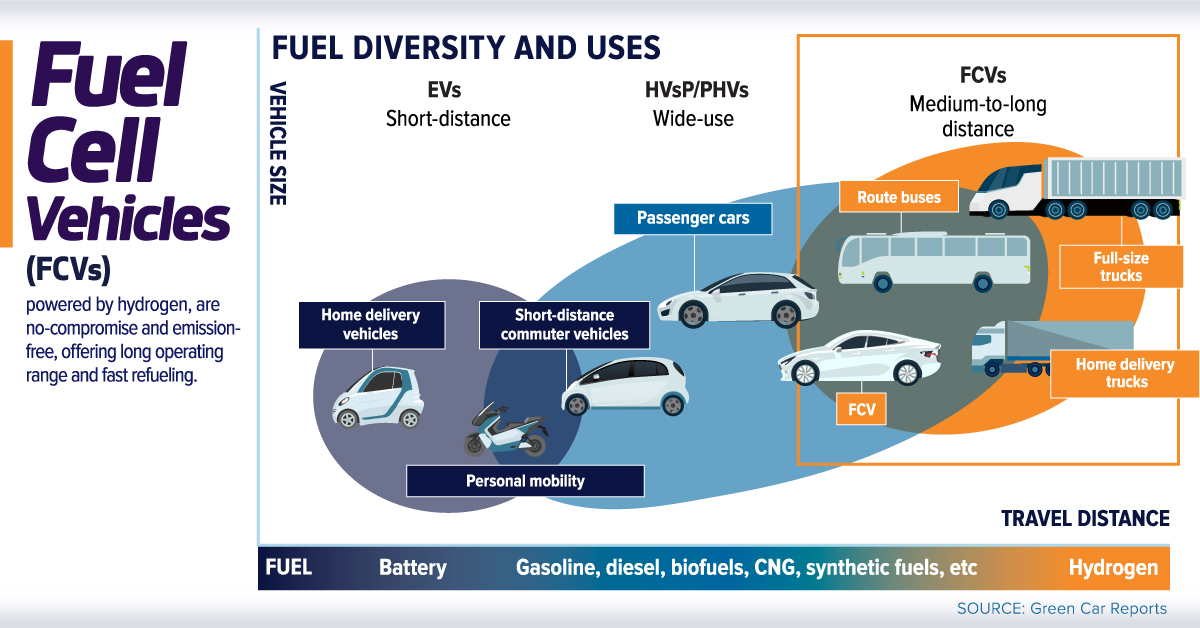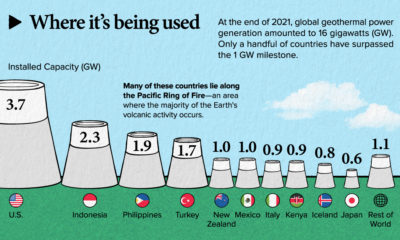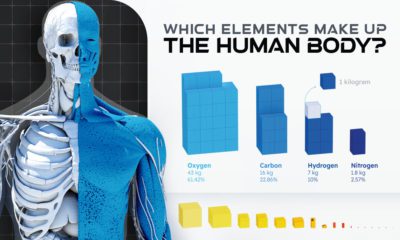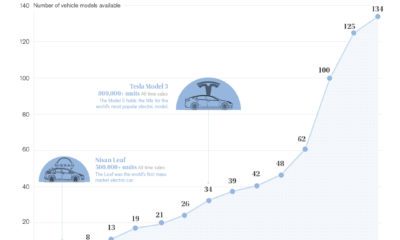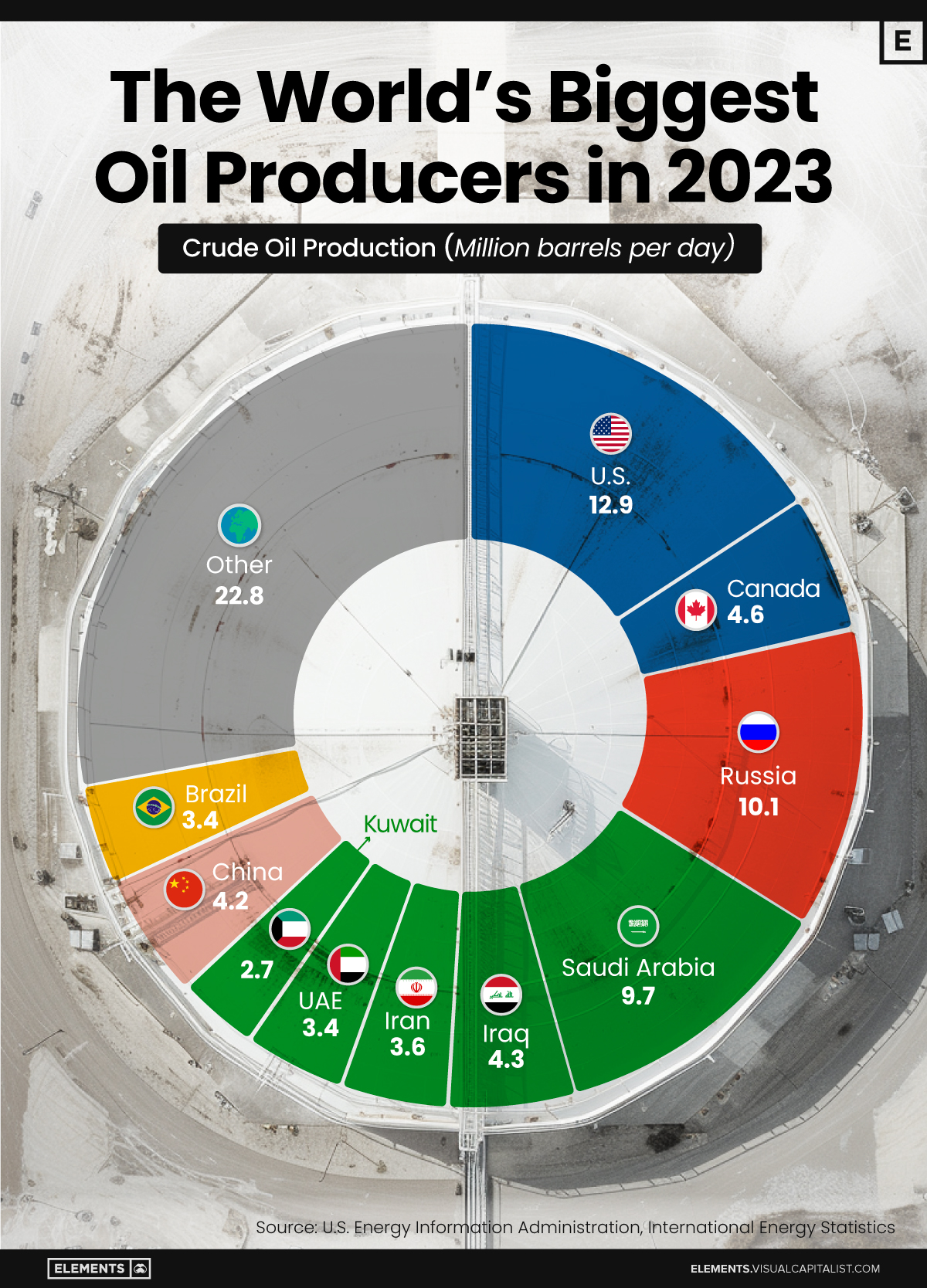Energy
The Evolution of Hydrogen: From the Big Bang to Fuel Cells
It all started with a bang…the big bang!
The explosive power of hydrogen fueled a chain reaction that led to the world we have today.
Now this power is being deployed on Earth to supply the energy needs of tomorrow.
Visualizing the Power of Hydrogen
Today’s infographic comes to us from the Canadian Hydrogen and Fuel Cell Association, and it outlines how hydrogen and fuel cell technology is harnessing the power of the universe to potentially fuel an energy revolution.

What is Hydrogen, and How’s it Used?
With one proton and one electron, hydrogen sits at the very beginning of the periodic table.
Despite hydrogen being the most common molecule in the universe, it is rarely found in its elemental state here on Earth. In fact, almost all hydrogen on the planet is bonded to other elements and can only be released via chemical processes such as steam reforming or electrolysis.
There are five ways hydrogen is being used today:
- Building heat and power
- Energy storage and power generation
- Transportation
- Industry energy
- Industry feedstock
However, what really unleashes the power of hydrogen is fuel cell technology. A fuel cell converts the chemical power of hydrogen into electrical power.
Hydrogen Unleashed: The Fuel Cell
In the early 1960’s, NASA first deployed fuel cells to power the electrical components of the Gemini and Apollo space capsules. Since then, this technology has been deployed in everything from the vehicle you drive, the train you take, and how your favorite products are delivered to your doorstep.
Nations around the world are committing to build hydrogen fueling stations to meet the growth in adoption of fuel cell technology for transportation.
Hydrogen: A Green Energy Solution
Hydrogen fuel and fuel cell technology delivers green solutions in seven ways.
- Decarbonizing industrial energy use
- Acting as a buffer to increase energy system resilience
- Enabling large-scale renewable energy integration and power generation
- Decarbonizing transportation
- Decarbonizing building heat and power
- Distribution energy across sectors and regions
- Providing clean feedstock for industry
According to a recent report by McKinsey, hydrogen and fuel cell technology has the potential to remove six gigatons of carbon dioxide emissions and employ more than 30 million people by 2050, all while creating a $2.5-trillion market.
This is technology that can be deployed today, with the potential to transform how we live and power our economies in a sustainable way.
Energy
The World’s Biggest Oil Producers in 2023
Just three countries accounted for 40% of global oil production last year.
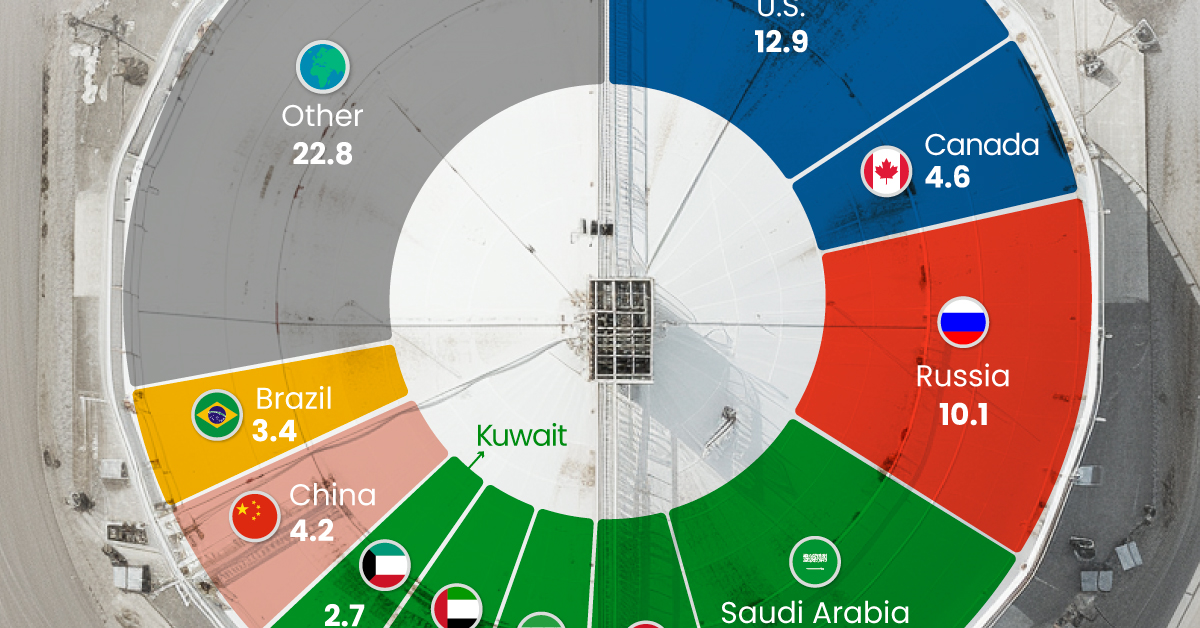
The World’s Biggest Oil Producers in 2023
This was originally posted on Elements. Sign up to the free mailing list to get beautiful visualizations on natural resource megatrends in your email.
Despite efforts to decarbonize the global economy, oil still remains one of the world’s most important resources. It’s also produced by a fairly limited group of countries, which can be a source of economic and political leverage.
This graphic illustrates global crude oil production in 2023, measured in million barrels per day, sourced from the U.S. Energy Information Administration (EIA).
Three Countries Account for 40% of Global Oil Production
In 2023, the United States, Russia, and Saudi Arabia collectively contributed 32.7 million barrels per day to global oil production.
| Oil Production 2023 | Million barrels per day |
|---|---|
| 🇺🇸 U.S. | 12.9 |
| 🇷🇺 Russia | 10.1 |
| 🇸🇦 Saudi Arabia | 9.7 |
| 🇨🇦 Canada | 4.6 |
| 🇮🇶 Iraq | 4.3 |
| 🇨🇳 China | 4.2 |
| 🇮🇷 Iran | 3.6 |
| 🇧🇷 Brazil | 3.4 |
| 🇦🇪 UAE | 3.4 |
| 🇰🇼 Kuwait | 2.7 |
| 🌍 Other | 22.8 |
These three nations have consistently dominated oil production since 1971. The leading position, however, has alternated among them over the past five decades.
In contrast, the combined production of the next three largest producers—Canada, Iraq, and China—reached 13.1 million barrels per day in 2023, just surpassing the production of the United States alone.
In the near term, no country is likely to surpass the record production achieved by the U.S. in 2023, as no other producer has ever reached a daily capacity of 13.0 million barrels. Recently, Saudi Arabia’s state-owned Saudi Aramco scrapped plans to increase production capacity to 13.0 million barrels per day by 2027.
In 2024, analysts forecast that the U.S. will maintain its position as the top oil producer. In fact, according to Macquarie Group, U.S. oil production is expected to achieve a record pace of about 14 million barrels per day by the end of the year.
-

 Money2 weeks ago
Money2 weeks agoVisualizing the Growth of $100, by Asset Class (1970-2023)
-

 Money1 week ago
Money1 week agoWhere Does One U.S. Tax Dollar Go?
-

 Green2 weeks ago
Green2 weeks agoRanked: Top Countries by Total Forest Loss Since 2001
-

 Real Estate2 weeks ago
Real Estate2 weeks agoVisualizing America’s Shortage of Affordable Homes
-

 Maps2 weeks ago
Maps2 weeks agoMapped: Average Wages Across Europe
-

 Mining2 weeks ago
Mining2 weeks agoCharted: The Value Gap Between the Gold Price and Gold Miners
-

 Demographics2 weeks ago
Demographics2 weeks agoVisualizing the Size of the Global Senior Population
-

 Automotive2 weeks ago
Automotive2 weeks agoTesla Is Once Again the World’s Best-Selling EV Company

